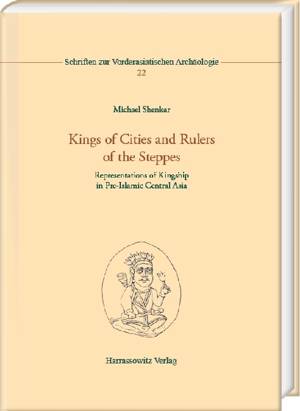
- Retrait gratuit dans votre magasin Club
- 7.000.000 titres dans notre catalogue
- Payer en toute sécurité
- Toujours un magasin près de chez vous
- Retrait gratuit dans votre magasin Club
- 7.000.0000 titres dans notre catalogue
- Payer en toute sécurité
- Toujours un magasin près de chez vous
Kings of Cities and Rulers of the Steppes
Representations of Kingship in Pre-Islamic Central Asia
Michael Shenkar
269,95 €
+ 539 points
Description
Kings of Cities and Rulers of the Steppes examines the iconography of Central Asian rulers from the Bronze Age to the Early Islamic period, focusing on the cultural, religious, and ideological messages conveyed through royal imagery. With over 650 illustrations (including 300 original drawings), Michael Shenkar traces the evolution of kingship and its iconography over time, highlighting Central Asia's role as a meeting point for Iranian, Greek, Chinese, Indian, and Turkic cultures. Often referred to as a "crossroads of civilizations," Central Asia provides a rich context in which these cultures interacted and influenced one another. By examining royal imagery as a historical and cultural source, this book uncovers the cultural complexities behind the kings who ruled the region's rich cities and vast steppes. It uses these visual representations as a lens to explore the cultural, political, and religious dynamics that defined Central Asia's heritage. A major theme of the book is the unparalleled diversity of ancient Central Asian royal imagery, which reflects both the political fragmentation of the region and the interactions between nomadic and sedentary populations. Shenkar also highlights the distinct feature of collective sovereignty found in many Central Asian and Iranian states. Post-nomadic royal clans such of the Scythians, Yuezhi, Huns, and Turks often utilized an 'appanage system', allowing rulers to express their identities by combining traditional symbols of power with unique elements that differentiated them from others. This book provides an ambitious, multi-century exploration of Central Asian kingship, offering new insights into the political and cultural significance of the region's royal imagery
Spécifications
Parties prenantes
- Auteur(s) :
- Editeur:
Contenu
- Nombre de pages :
- 554
- Langue:
- Anglais
- Collection :
- Tome:
- n° 22
Caractéristiques
- EAN:
- 9783447123440
- Date de parution :
- 26-03-25
- Format:
- Livre relié
- Format numérique:
- Genaaid
- Dimensions :
- 220 mm x 35 mm
- Poids :
- 2190 g

Les avis
Nous publions uniquement les avis qui respectent les conditions requises. Consultez nos conditions pour les avis.






